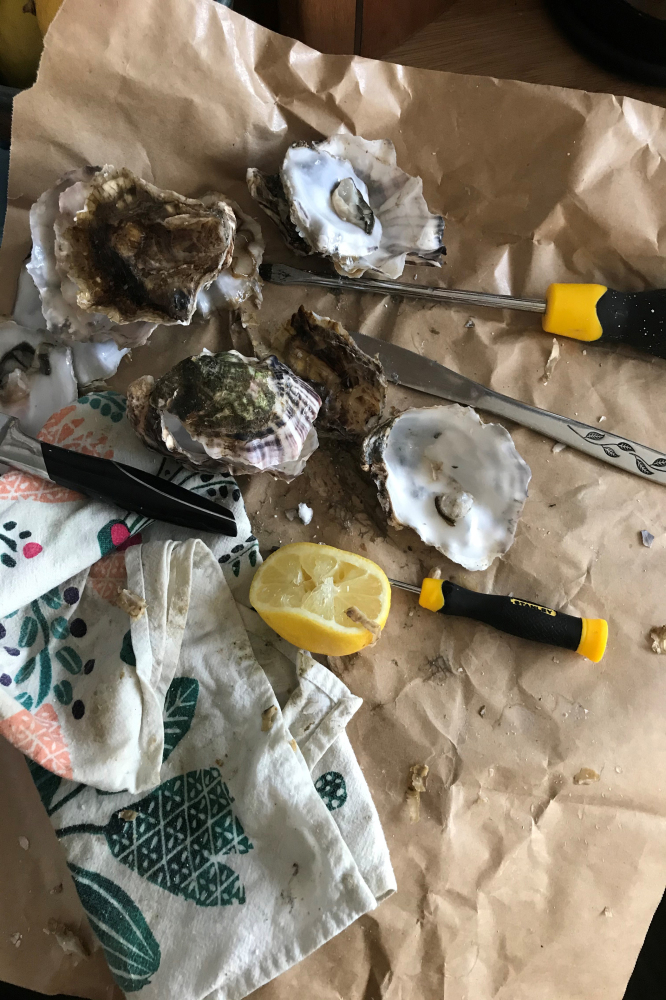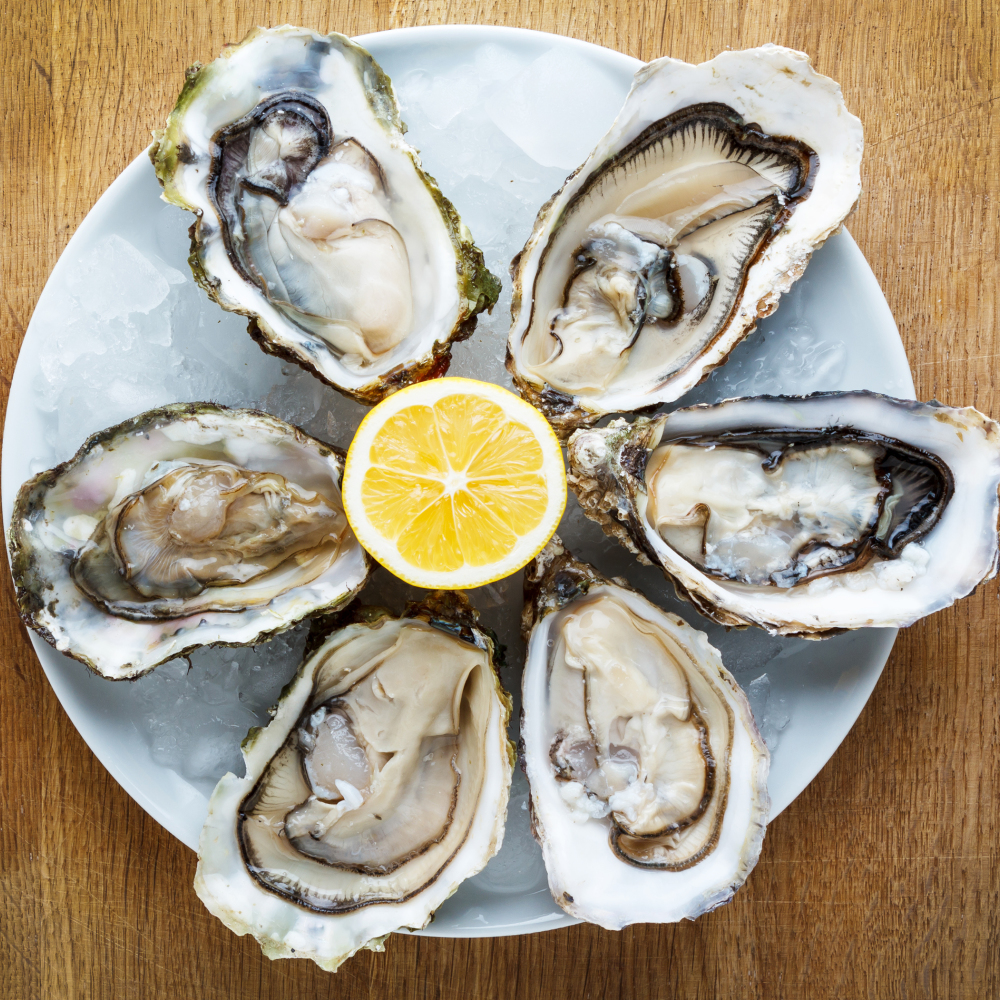It has, undoubtedly, been a very strange couple of months. One of the more life-affirming and enhancing aspects of living through lockdown though, has been the opportunity to cook more, from scratch, at home.

I signed up to a fish box scheme and this is what I learned
Of course, some people have found the incessant cooking (and colossal amounts of washing up) monotonous and thoroughly draining, but if you do adore spending time making dinner, this period of having greater access to, and need of, your kitchen, has been something of a joy. It certainly has been for me. Conversely though, never has going to the supermarket felt so dystopian, stressful and dangerous.
At the beginning of lockdown, I opted to minimise supermarket anxiety where I could, by signing up to a few sustainable delivery schemes and services, covering veg (Oddbox, oddbox.co.uk), meat (The Ethical Butcher, ethicalbutcher.co.uk), toilet paper (Who Gives A Crap, uk.whogivesacrap.org) and, most excitingly for me, seafood (SoleShare, soleshare.net) – but look into what schemes are available locally to you.
SoleShare in particular works with small-scale British fishermen, and the idea is, you select how much seafood you want (1/2 kilo for two people), how often (weekly/bi-weekly) and in what form (whole fish, or oven ready). You then receive a text on collection day to let you know what the day's catch is.
And with each new ocean dispatch, you learn quite a bit…
Not knowing what seafood you're getting is actually quite exciting
Every delivery is a surprise and a challenge – even if sometimes it sends you into a slight culinary panic. Gurnard?! What are you meant to do with gurnard? Why is the internet awash with recipe ideas for dover sole, rock sole and lemon sole, but not the sand sole you've got coming?! And then, a few weeks in, just as you've got into a groove with flat and round fish, you get a text saying: 'Oysters from Suffolk'. Oh no.
It is possible to shuck oysters with a screwdriver
Although on signing up I had agreed to shellfish, as well as fish, it hadn't really occurred to me that I'd have to wrangle with oysters, at home, on a Thursday night. We poured fortifying gin and tonics, and got the toolbox out. No, I do not own an oyster shucking knife (who does?!). But, after much almost-slicing of fingers, and practically shredding a tea towel on the sharp, pearly shells, we developed a knack, thanks to a couple of screwdrivers and by repeating to one another: 'Be careful – don't stab yourself!' They were delicious oysters, though. Once you've excavated them yourself, smugly keeping all the juice intact, knocking them back doesn't feel quite so intimidating.

Scale the fish before you fry it
I avoided this disaster by mere moments. Your fish may feel smooth to the touch, but double check – scales will add texture, but it's not one you're likely to enjoy. Also, it's quite incredible how far scales can fly as your scrape them off with a knife, against the grain. Do it in the sink, and wear an apron if you have one. And just accept that you're probably going to have to wash your hair after dinner – it's worth it. Honest.
Factor in more time than you think you need
Opting for whole fish deliveries means that, although the fish have been cleaned and gutted, they're still very much intact – skin on, bones in, eyes glistening (finding a steamed gurnard eyeball rolling around my plate was quite unnerving). While many fish box services will fillet the catch for you (often for a little more money), I figured half the fun/trauma of it all would be learning to handle and prep a whole fish from start to plate. I also swiftly realised that doing so while hungry is a mistake, especially if you don't actually own a fish filleting knife, and are trawling through 'how to skin a round fish' videos on Youtube while your hands are slick with fish goo. Now, as soon as I've got my delivery, I suss it out, wiggle its skin off immediately (if necessary), and then, come dinnertime, it's just a matter of slinging it in a pan with half a pat of butter.
Lemons need to be on hand at all times…
… and capers, tomatoes, ginger and butter. Between those five things, whatever type of fish or shellfish turns up, you'll be equipped to transform it into supper without too much bother. I fried that sand sole with tomatoes and capers in butter – and squeezed lemon juice over it. Gurnard was steamed with ginger – and then I squeezed lemon juice over it. Oysters, you guessed it, had lemon squeezed over. If in doubt, grab a lemon, every time.
You're always going to miss bits – and that's OK
Watching my boyfriend dig gurnard bones out of his mouth was not overly enjoyable, and nor was almost choking on a bit of dislodged oyster shell (it's so, so sharp), but to be fair to myself, I had never shucked an oyster before. Prising the shell open at all was a major accomplishment – and even top chefs can't guarantee a bone-free fillet. It's the risk you take in the pursuit of omega-3s.
The sense of achievement is quite amazing
The challenge of coming up with dinner Ready, Steady, Cook-style, on top of attempting to skin, de-bone and not overcook a fish that has been caught that morning, obliterates all thoughts and worries about anything else. It's just you and the fish. And it somehow fills an entire evening. The tang of lemons, the ingrained salt of the sea (when you miss open water almost as much as your family), and the absorption, in-the-moment feeling of cooking something unfamiliar and elemental – it's demanding but fun, and still gets dinner on the table.

